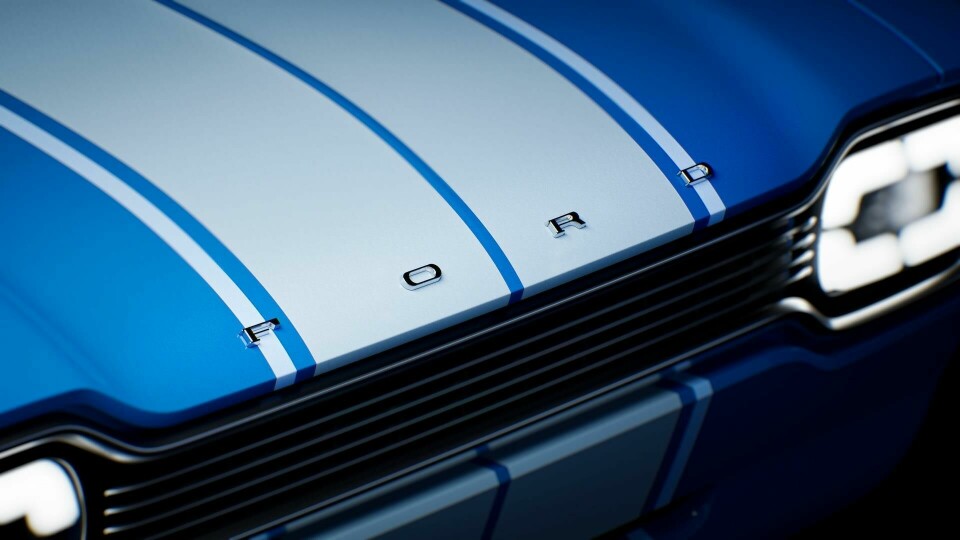
Inside DRVN design and the art of the Continumod
Car Design News gets a behind-the-scenes tour of the Coventry studio and the design team led by Wayne Burgess
There is some exciting work going on at the end of a quiet industrial estate in Coventry, but you’d never know it.
Tucked away beyond the nearby university campus is DRVN Group, by all measures a fully-fledged OEM operation that for years has been an integral provider of engineering and design services to some of the biggest car brands in the world. The thing is, you’d only be aware of that if you were in the biz.
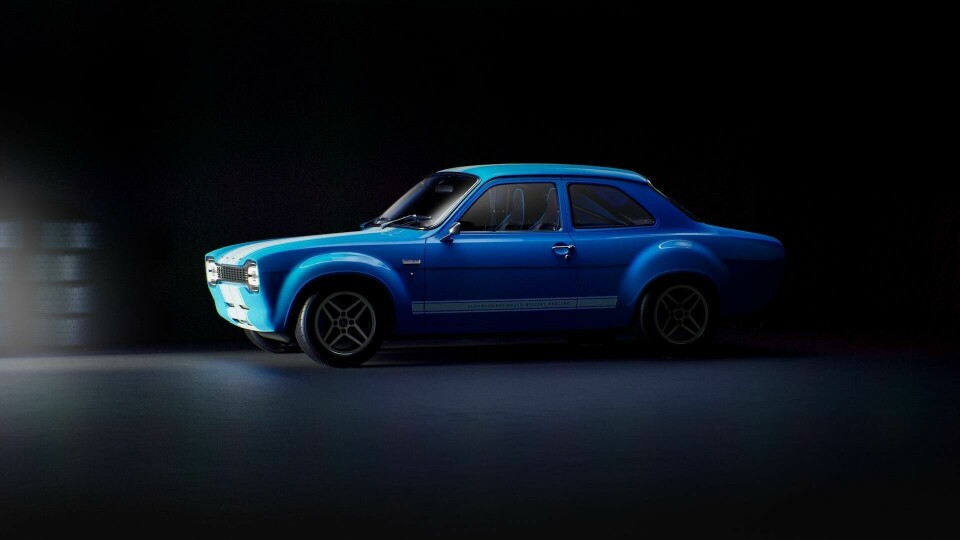
From bespoke parts for Aston Martin and Bentley to close involvement with leading motorsport teams, DRVN has operated mainly behind closed doors. Media activity has not always been a priority, but interest has surged following a recent partnership with Ford Motor Company to reproduce some of the Blue Oval’s most iconic heros from the ground up. The term Continumod has even been trademarked to set itself apart from the restomod crowd. Not with malice (indeed, some key members of the team come from the restomod world) but to underline that DRVN is essentially a fully-fledged carmaker.
Specifically, CDN was brought along to discuss the reproduction of a blueprint-accurate Ford Escort RS Mk1. Production will be limited to 150 units, with each vehicle given continuation chassis numbers. Speaking of numbers, here are the important bits. The 2.1-litre engine will produce 300PS and sing to over 10,000rpm, mated to a manual gearbox and a total bodyweight of just 800kg. Production is slated to begin in the third quarter of 2025, priced at a not-insignificant sum of £295,000. It is the first of several such projects to come.
That price tag does not seem to have scared anyone off, with pre-orders over subscribed in the space of 45 minutes. Customers of the re-born Escort RS came from the midlands to Michigan, to Cambodia to Trinidad and Tobago.
“This all came about because we felt a little underwhelmed by the current state of modern cars,” explains chief executive Ian Muir. “We essentially want to become the leading provider of the peak analogue experience.” There are no touchscreens, no multi-functional steering wheels and even the windows have manual winders. Almost begrudgingly, a smart rear-view mirror has been developed to support things like Apple CarPlay and bluetooth audio.
Muir employs expressions like “transcend the ordinary” and “stoke the soul” when describing the company’s ideology, which elsewhere could feel a little fluffy, but here it feels genuine. This is a relatively compact leadership team but everyone seems to have shared values – and a set of driving-cars-fast stories to tell.
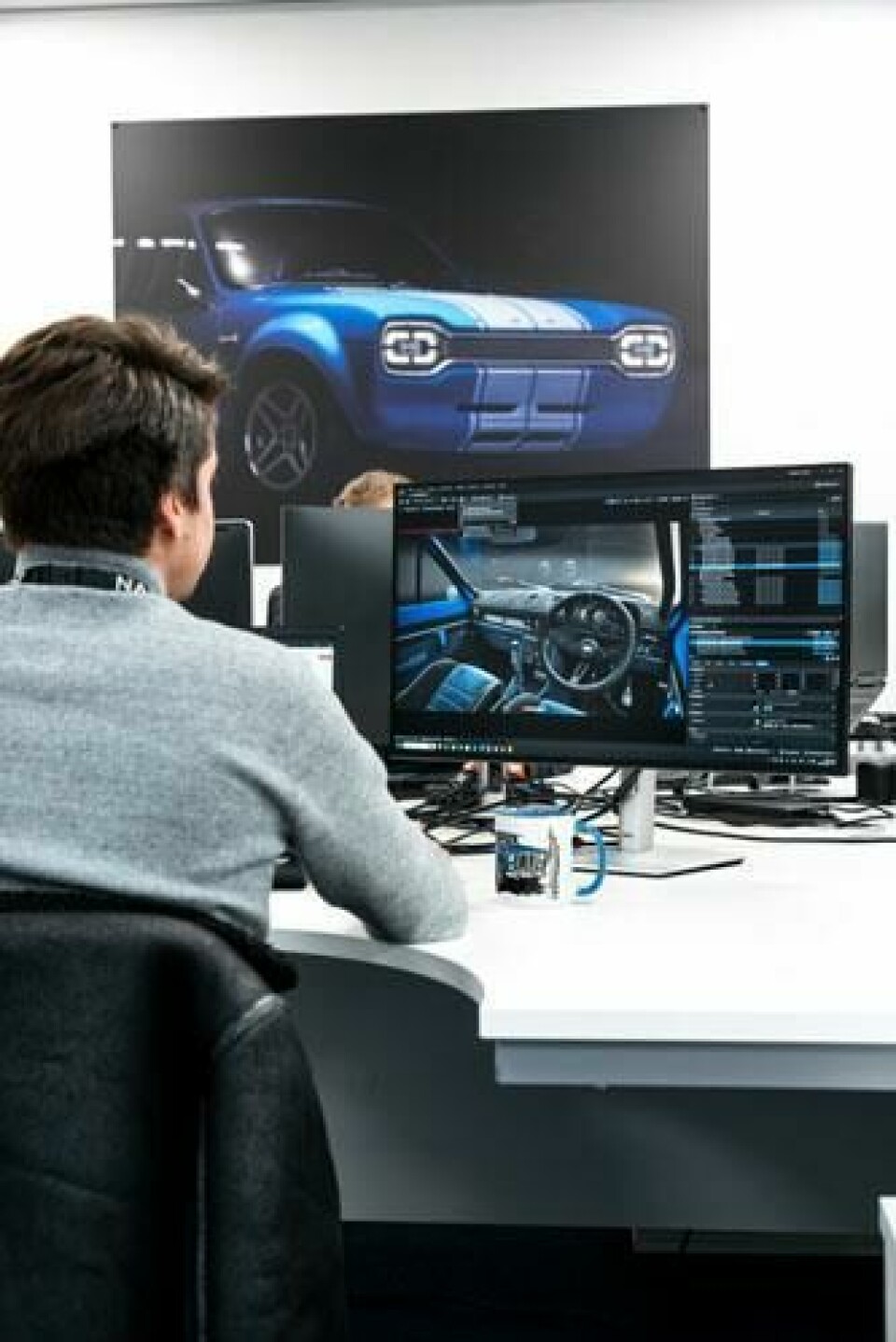
The division of DRVN that will be handling the Ford projects is called Boreham Motorworks. Wayne Burgess, a name of which many will recognise, has been brought in to lead design and has brought in past colleagues to assemble, in his words, “the S.A.S. of design teams.”
The military analogies continue: with most members able to perform multiple roles – one exterior specialist was working on a door handle as we walked around – they are deemed Swiss Army Knives. One of the CMF designers has even begun a post-graduate degree in UX. “We massively overachieve here,” Burgess emphasises. “Everyone is multidisciplined and aesthetically literate.”
Coming most recently from Indian brand Ola Electric, designing primarily electric scooters, it is quite a different set of projects Burgess will be working on.
However, his experience abroad has encouraged the team to work faster and accept that not all traditional methods are vital in DRVN’s case. Agility is the aim of the game and thus a staple diet of Autodesk, Unreal Engine and various other software sets keeps the studio humming, while VR has been employed for rapid reviews. A new interior buck is on the way which will elevate the experience with real materials to support the virtual environment. “I’ve become very interested in the tools that allow you to expedite design,” says Burgess. “You can’t justify a clay process in this scale of business, and we have found that you can go from digital models to VR reviews and then real vehicles pretty quickly now.”
The UX/UI questions here are: does the steering wheel feel good, does the switchgear look great?
As for the Boreham Escort RS itself, the design blends the exact proportions of the original with conservative modern touches such as the daytime running lights, LED tail lamps and premium materials in the interior. Particular attention went to the wheels, with the design team careful not to make too much of a statement and ruin the retro feel of the car. “We all felt that 16-inch wheels were too big for this car as they kind of distorted things,” recalls Burgess. “We dropped it down to 15s and that really worked with the scale of the vehicle.”
And while the design process is very much digital, the outcome is not. “Digital UX/UI is a massive part of modern car design, but it doesn’t really exist in our world here. It is kind of gone for us,” he admits. “The real UX/UI questions are: does the steering wheel feel good, does the switchgear work and look great?”
Just across the hall from the design studio is a larger room that houses all manner of specialists, which some might categorise broadly under “engineering.” Here, technical experts work on everything from materials strategy and procurement to structural rigidity, analysing weak points and liasing with others to find smart solutions. In most cases this requires little more than the swivel of an office chair.
Suspension and body control experts sit alongside those handling complex electrical/electronic (E/E) architecture, wiring and software programming for things like active aero and in-vehicle audio. Others work on ergonomics and packaging efficiency, ensuring DRVN’s builds work for modern customers who expect performance and comfort just like any other mass-produced vehicle. Even the wireharnesses are made from scratch in-house to a set formula tailored to DRVN’s cars. All of this is in the name of repeatability, underlined by a common phrase heard across the office: “Vehicle one should look like vehicle 50.”
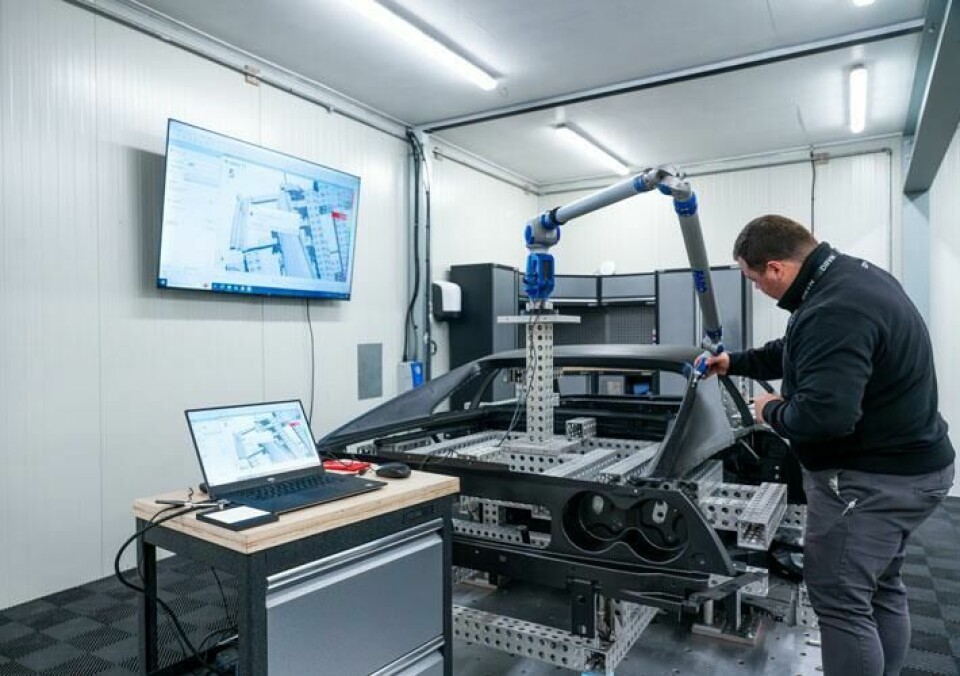
Down a flight of stairs and through into an open, noisy warehouse is all manner of manufacturing techniques, from an enormous CNC machine to a special press that can turn out carbon-fibre panels at rapid pace.
The primary focus here is on composites and assembly, while the trim shop occupies the entire upper floor. Separate workshops below – one housing an Evoluto F355 in bits – are as clean as a dentist’s office. The Coventry site is joined by another outpost in the northeast of England (paint and fabrication) and one more in Surrey which handles assembly and the race division. All together, DRVN can handle upwards of 400 vehicles a year at peak capacity. Around 250 people work across the group, and 100 at Coventry alone.
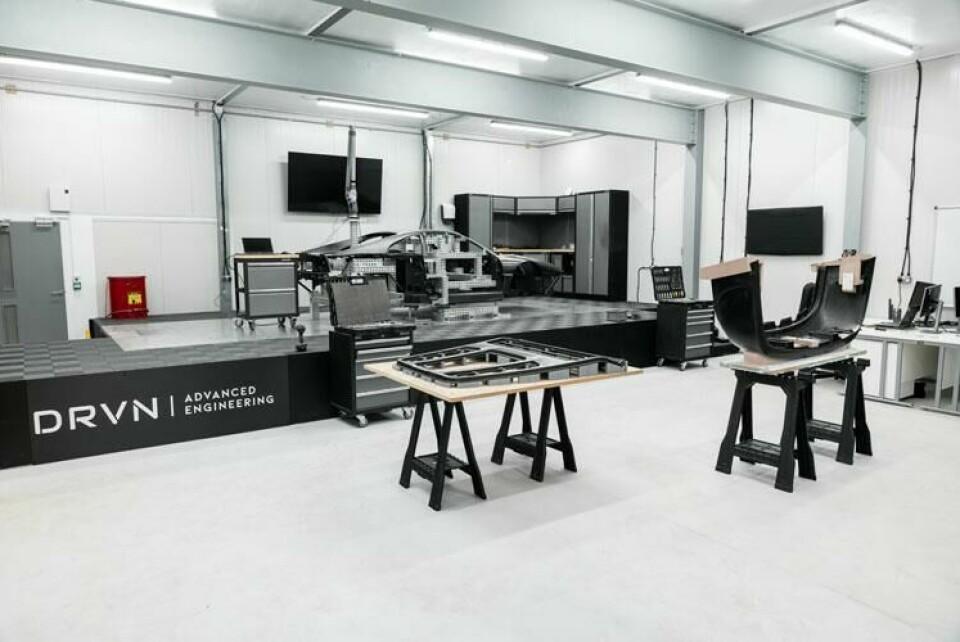
For Burgess, the move to DRVN was fate. The British designer drives a performance Ford to the office and owns a Ferrari F355; his first DRVN projects were a Ford Escort RS and a carbon-bodied F355. “The alignment in terms of what we consider to be cool cars was already there before I’d ever met anybody here,” he explains. Amjad Ali, ex-technical director at Gunther Works, found a similar curiosity when joining DRVN: his home near Edinburgh is exactly 355 miles from the office in Coventry. “That was a sign,” he laughs.
Even the most casual of industry observers can recognise a boom in retro design; Car Design News has noted a growing number of restomod projects in our weekly round-ups, primarily around the Porsche 911, Land Rover Series and Defender, and Mercedes G-Class. Other recent builds include the Maserati Shamal, Jaguar XJS and even the Kia Pride hatchback. Citroen HY vans have been reimagined. The Renault 17 was brought back for Paris 2024. The list goes on. And on.
But the move to reproduce iconic models under license adds a different, stronger flavour to the trend and is perhaps telling of wider sentiment toward contemporary design. A closing remark by Burgess, almost wistfully, can be intepreted as you wish: “Here, I’m designing cars I genuinely desire and want to own.”










